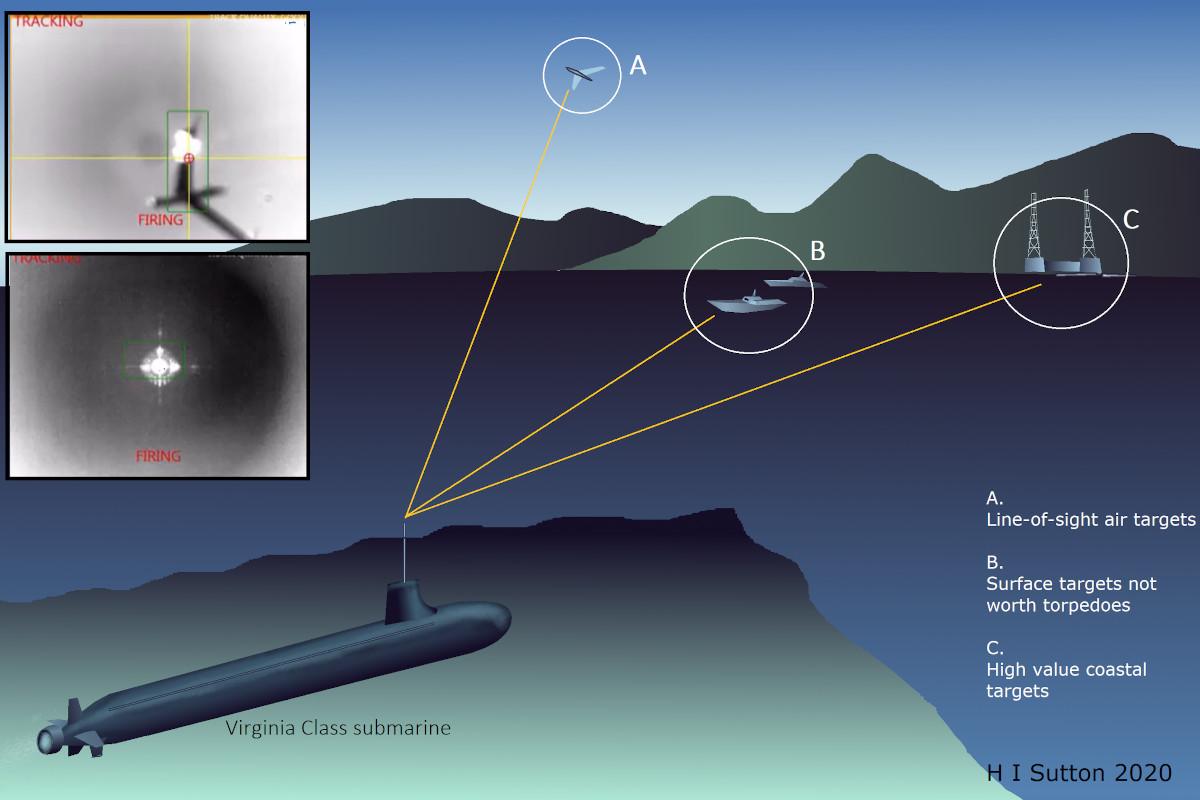Anti Sub Weapon - An anti-submarine missile is an anti-submarine weapon. Usually a variant of the anti-ship missile design, the anti-submarine system typically uses a jet or rocket to deliver an explosive warhead aimed at a submarine, a depth charge, or a torpedo carried from a launch ship. or other platform, closer to the target person.
Ikara, an Australian-designed missile used by several navies between the 1960s and 1990s; A rocket-parachute delivery system carried the acoustic torpedo up to 10 miles (19 km) after launch. A version developed in England and used by the Royal Navy can deliver nuclear depth charges.
Anti Sub Weapon

The Malfon, used by the French Navy between 1966 and 1997, used a rocket-assisted glider to carry the torpedo up to 8 nautical miles (13 km) after launch.
A Girl Peeps Inside An Anti Submarine Launcher Of The Missile Frigate Ma'anshan Of The Chinese People's Liberation Army Navy (plan) Task Force 525 At The Port Of Manila April 14, 2010. An
These were early weapons designed for use by ships against submerged submarines. These explosives were initially dropped when the ship moved over the suspected submarine area. Before World War II, shipboard sonar could not maintain contact with submarines nearby.
Various mortar-type projectors were developed during World War II, including the Hedgehog and Squid, to allow ships to maintain sonar communications while directing explosives toward submarines.
During the Cold War, missiles were developed to provide greater range and less recoil. Some missiles and rockets, such as the Hong Sang Eo (Red Shark) carry torpedoes to provide ultimate guidance to the warheads.
The advantage of an anti-submarine missile is the stationary range of the attack. The Swedish Bofors 375mm m/50 anti-submarine warfare (ASW) rocket, for example widely used by Sweden, France, Japan and Germany can travel up to 3600 meters depending on the rocket used.
Wallpaper Ship, Large, Anti Submarine, Severomorsk Images For Desktop, Section оружие
The USSR developed its anti-submarine rockets in the RBU series and these are still in use in Russia and in countries that use Russian-built ships. Today, anti-submarine rockets have been removed from most Western navies, replaced by ASW torpedoes. The Squid was a British World War II anti-submarine weapon. This included a three barreled mortar that fired depth charges. It replaced the Hedgehog system, and was replaced by the Limbo system.
Ordered straight from the drawing board in 1942 under the supervision of the Directorate for the Development of Various Armaments, the weapon was brought into service on HMS Ambuscade in May 1943. The first production unit was established on HMS Hadley Fortress; During World War II it was installed on 70 frigates and corvettes. The first successful use was by HMS Loch Killin on 31 July 1944, when she sank U-333. The system is credited with sinking 17 submarines in 50 attacks during the war. By 1959, 195 Squid machines had been manufactured.
This weapon was a three-barreled 12-inch (305 mm) mortar with mortars placed in series but not fired from each other to disperse the shells. The barrel was mounted on a frame that could be rotated 90 degrees for loading. The missile weighed 390 pounds (177 kg) with a 207-pound (94 kg) submunition.
On other ships, the squid engines were at the back - the bombs were launched along the length of the ship and dropped into the sea a little in front of it.
Large Anti Submarine Ships Of The Ussr Navy
The sinking rate was 43.5 ft/s (13.3 m/s) and hourglass fuses were used to determine the depth of the explosion; All three shells were to be placed at the same depth; It can be continuously updated up to the time of launch to take into account the movement of the target.
The weapons were automatically fired at the right time from the sonar frequency recorder. The pattern formed a triangle about 40 yards (37 m) by 275 yards (250 m) in front of the ship. Most squid companies use two sets of mortars. All six bombs were fired in a salvo so they opposed the spread of the triangle. The salvo was designed to detonate 25 feet (10 m) above and below the target, with a pressure wave causing the submarine to collapse. Post-war tests found that the Squid was nine times more effective than conventional depth charges.
Despite its proven effectiveness, some officers, notably Captain Kenneth Adams, RCN, objected to the Squid being suitable for escort because it meant sacrificing guns, which would make the ships unfit for naval duties.
In April 1977, the Type 61 frigate Salisbury became the last ship in Royal Navy service to operate the Squid. The mortar models featured in Explode! The Naval Firepower Museum in Gosport, Hampshire and another at Devonport Naval Base. The system is installed on HMS Cavalier (D73), which is based in Chatham, Kt. Part of the collection of historic ships at the Historic Dockyard. It can also be seen on HMCS Haida, which is on display in Hamilton, Ontario.
The Hedgehog: Forward Throwing Anti Submarine Mortars
Sub catering, sub contractors, svs sub, anti sub warfare, sub zero, sub hub, sub q anti age, sub franchise, so i married an anti fan full movie eng sub, publix sub, qsc sub, sub etf

0 Comments